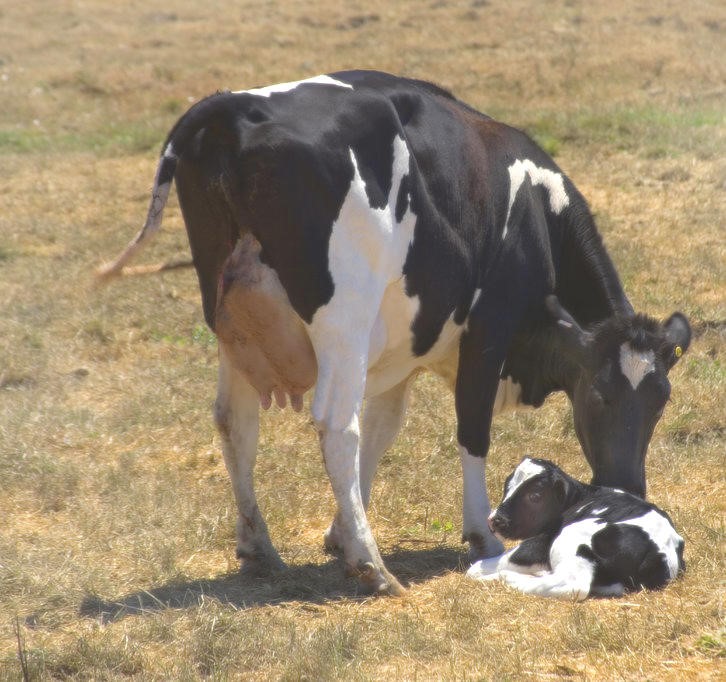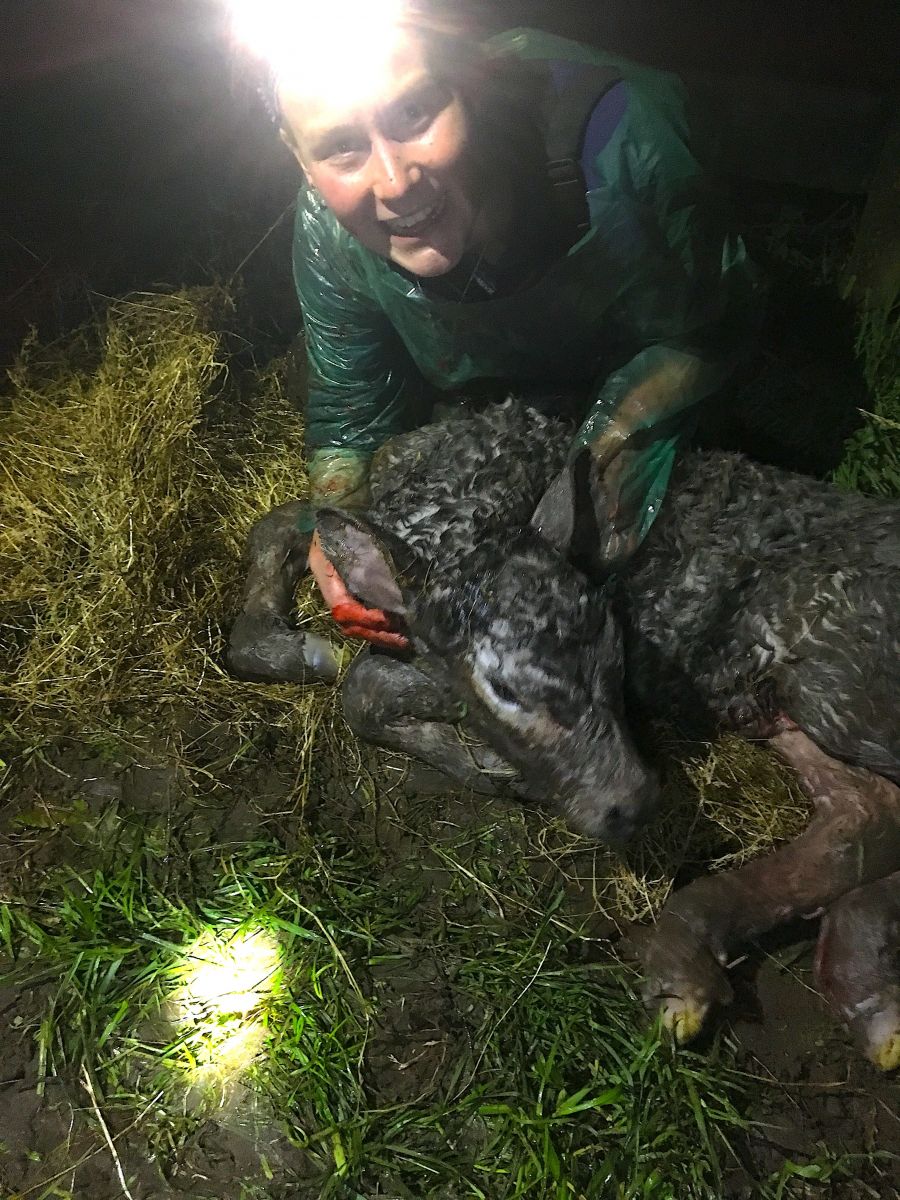When we think of baby animals we often think of how cute puppies and kittens are, weighing in at sometimes just 200 grams. We don’t often think about livestock. However, some of the cutest baby animals are over 35 kg at birth! While here in New Zealand, I have been fortunate enough to work with lots of baby cows….and I mean lots. A baby cow is called a calf.
Like humans, cows are pregnant and carry their calves for nine months after which they give birth (known as “calving”) to typically one calf, with twins occurring occasionally. These calves are born at approximately 35-40 kg and some beef breeds have 50-60 kg calves at birth! One way New Zealand’s dairy industry is different from that in Canada is that they work on a  seasonal schedule. In Canada, cows give birth to calves throughout the year, with no specific breeding or calving season. New Zealand is quite unique: they have a breeding season, typically October to December, and a calving season, between mid-July to the end of September. This means that almost ALL the calves in New Zealand are being born right now! It is a very busy time. This has been a tremendous experience as a veterinary student as it has meant I’ve had the opportunity to really practice my skills in monitoring pregnancies, treating reproductive disorders, and assisting in calving cows.
seasonal schedule. In Canada, cows give birth to calves throughout the year, with no specific breeding or calving season. New Zealand is quite unique: they have a breeding season, typically October to December, and a calving season, between mid-July to the end of September. This means that almost ALL the calves in New Zealand are being born right now! It is a very busy time. This has been a tremendous experience as a veterinary student as it has meant I’ve had the opportunity to really practice my skills in monitoring pregnancies, treating reproductive disorders, and assisting in calving cows.
 The vast majority of cows will have their calves on their own without any trouble. However, sometimes a cow can run into trouble. If a calf is stuck and the cow cannot calve on her own it is known as dystocia. This can happen for multiple reasons: if the cow is past her due date without calving, the calf can become too big; if there is damage to her reproductive tract; if the calf is in an abnormal position inside the womb; or if the cow gets sick prior to calving. Enter the veterinarian! Farmers are very good at spotting a cow that is having trouble and will call the vet out to the farm right away in order to assist. Calves can be born at anytime of the day or night….and of course even at 3 a.m.! This is a picture of Dr. Catherin Robinson after we helped with a calving late at night.
The vast majority of cows will have their calves on their own without any trouble. However, sometimes a cow can run into trouble. If a calf is stuck and the cow cannot calve on her own it is known as dystocia. This can happen for multiple reasons: if the cow is past her due date without calving, the calf can become too big; if there is damage to her reproductive tract; if the calf is in an abnormal position inside the womb; or if the cow gets sick prior to calving. Enter the veterinarian! Farmers are very good at spotting a cow that is having trouble and will call the vet out to the farm right away in order to assist. Calves can be born at anytime of the day or night….and of course even at 3 a.m.! This is a picture of Dr. Catherin Robinson after we helped with a calving late at night.
When we arrive on-farm it’s important to work quickly to save both the calf and the cow. We snap into action and immediately begin preparing to help pull the calf out. The vet will often begin by feeling inside the cow to get an idea of what the calf is doing and what position it is in. They will feel around for two front or back legs and try to bring them forward toward them. Now comes the hard part: pull! We pull, working with the contractions of the cow to help slowly and tactfully slide the calf out.
Sometimes, however, the calf is simply too big or the position of the calf does not allow us to pull it out safely. In this situation a Caesarean section (C-section) procedure may be indicated. In a C-section, the cow is given pain medication, a sedative, and a local anesthetic while we make a clean cut through the abdomen and into the pregnant uterus. The calf is pulled out through the incision and the cow is stitched up. This way, the calf is saved and we minimize further damage to the cow’s reproductive tract and internal organs.
Since working with the large animal vets at Levin and Horowhenua Veterinary Centre I have been lucky enough to help with dozens of calvings and several C-section procedures! As a veterinary student it has been an excellent learning opportunity. Thanks so much for reading this blog post!
